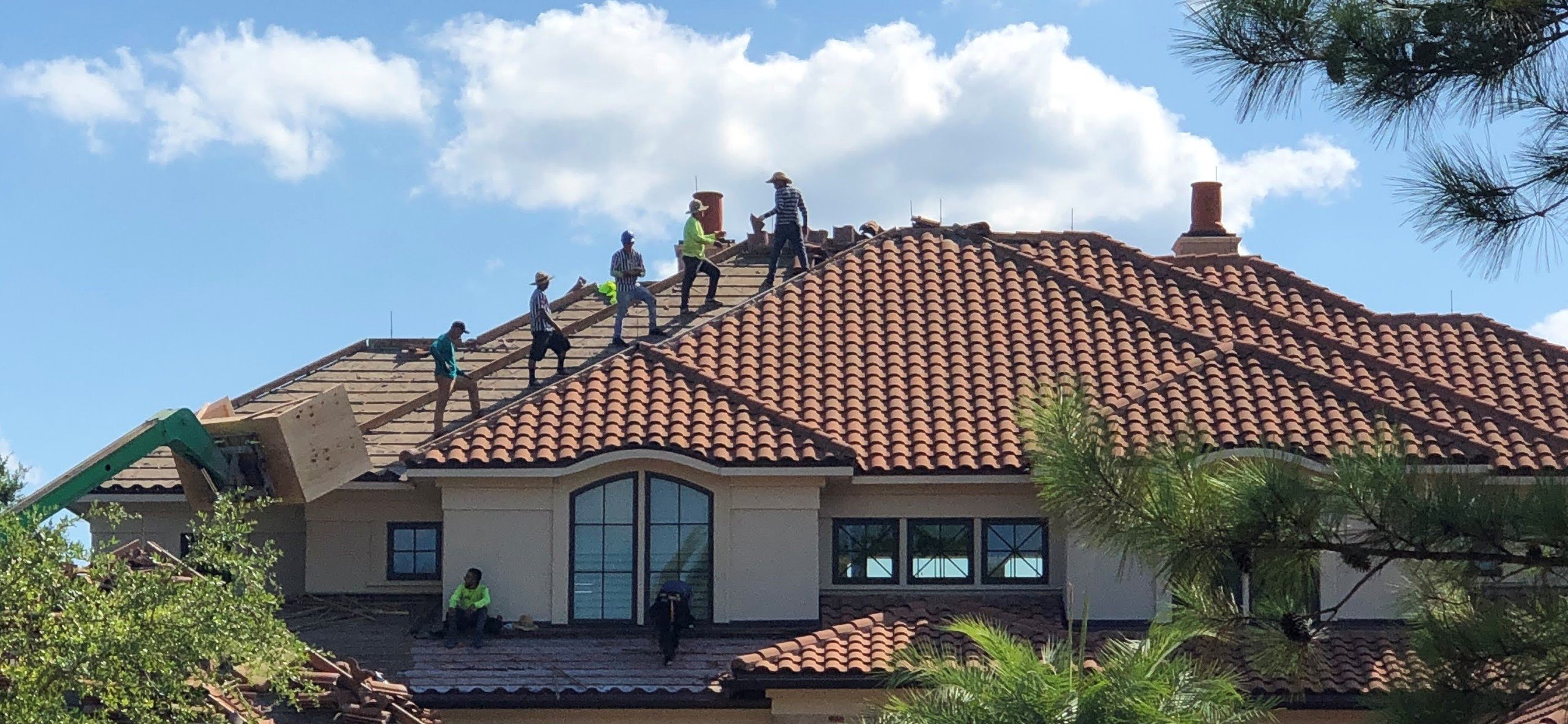The Advantages of Dealing With Gainesville FL Roofing Companies
The Advantages of Dealing With Gainesville FL Roofing Companies
Blog Article
Ideal Practices for Ensuring Proper Roof Ventilation
Making certain appropriate roof ventilation is vital for the longevity and performance of a roof. A well balanced intake and exhaust air vent ratio, commonly 1:300, plays a crucial function, with intake vents preferably positioned at the reduced side of the roof for amazing air entry and exhaust vents at the height for warm air leave. Regular examinations to determine clogs and keep clear airflow are extremely important. Keeping insulation away from vents is essential to stop air movement restriction. Understanding these foundational components sets the phase for more thorough insights into installation and upkeep practices that can dramatically improve your roof's performance.
Understand Air Flow Fundamentals
Correctly comprehending ventilation fundamentals is important for making certain the long life and effectiveness of roof. Reliable air flow minimizes wetness build-up and temperature extremes in the attic room, both of which can bring about considerable architectural damages with time. A well-ventilated roof covering helps in avoiding typical issues such as mold and mildew development, wood rot, and ice dams, which can endanger the honesty of the roofing products and the underlying structures.
The key goal of ventilation is to help with the movement of air, permitting for a consistent exchange between the indoor and exterior atmospheres. This balance is accomplished through a combination of intake and exhaust vents that collaborate to preserve optimal air movement. Consumption vents, normally located along the soffits or eaves, enable fresh air to go into the attic area, while exhaust vents, often situated at or near the roof ridge, enable hot, moist air to get away.
Secret elements influencing the performance of roofing air flow include appropriate placement, appropriate sizing, and guaranteeing that both intake and exhaust vents are unobstructed. Normal evaluation and maintenance are essential to identify prospective obstructions, damages, or inadequacies in the air flow system, therefore protecting the roofing system's performance and durability.
Sorts Of Roofing Vents
Roofing vents play a critical function in maintaining reliable attic room air flow and, by expansion, the overall wellness of the roof covering system. Various types of roofing system vents are readily available, each with unique advantages customized to certain roof covering requirements. Ridge vents, for example, are set up along the roof covering's optimal, enabling warm, damp air to get away from the attic room. They provide continual ventilation and mix perfectly with the roofline, making them both effective and cosmetically pleasing.

Soffit vents are mounted under the eaves and operate in tandem with roofing system vents to make certain a well balanced consumption and exhaust system. By permitting cooler air to go into from below, soffit vents facilitate the expulsion of warm air via upper vents. Gable vents, located on the outside walls of the attic room, offer another efficient remedy, particularly in homes with saddleback roofs.
Analyze Your Current Air Flow

Next, think about the age and condition of your roofing products and ventilation parts. Older systems may not abide by existing building regulations or may have worn away over time, reducing their performance. Conduct a complete evaluation to recognize any kind of indications of wear and tear, such as rust, damage, or voids that can compromise the system's efficiency.
Additionally, determine the attic temperature and humidity degrees. Heats and humidity can indicate inadequate ventilation - roofing companies gainesville florida. Utilize a hygrometer and thermostat to obtain exact readings, contrasting them with exterior problems. Persistent disparities recommend prospective problems that require attending to.
Installation Best Practices
Efficient setup of roof air flow systems is extremely important for ensuring optimum performance and durability. Appropriate setup begins with comprehending the certain air flow requirements of the building and the roof covering it covers. This involves calculating the proper proportion of consumption to tire vents, usually sticking to the 1:300 here regulation, which stipulates one square foot of ventilation for each 300 square feet of attic room flooring room.

The placement of vents is similarly vital. Consumption vents must be installed at the roof covering's lower side, typically in the soffits, to permit awesome air to get in. Exhaust vents, on the other hand, ought to be set up near or at the roofing system's optimal to facilitate the exit of cozy, moist air. This develops a natural air flow that aids keep temperature and moisture balance within the attic room.
Seal all air vent links carefully to avoid air leakages and possible water infiltration. Usage high-grade materials and follow manufacturer standards to ensure sturdiness and performance. Furthermore, incorporating ridge vents with baffles can substantially improve airflow efficiency by avoiding wind-driven rainfall and snow from entering the attic room.
Inevitably, precise installation of roofing air flow systems minimizes possible concerns such as mold and mildew growth, ice dams, and structural damages, ensuring the roof covering's honesty and the structure's total wellness.
Normal Upkeep Tips
Uniformity in maintenance methods is essential to ensuring the lasting performance of roof ventilation systems. Throughout these inspections, ensure that vents are complimentary of debris, nests, and various other obstructions that can hamper airflow.
Cleansing the vents is one more vital task. Utilize a soft brush or a vacuum to eliminate dirt and debris from consumption and exhaust vents. Be careful not to harm the vent displays or louvers during the procedure. In addition, examine the attic room for any type of signs of water damage, which could compromise the stability of the roof.
Correct insulation is just as crucial. Ensure that attic insulation does not block the vents, as this can significantly limit airflow. If any insulation has actually shifted or worked out, reposition or change it to maintain a reliable barrier.
Finally, change any damaged or missing elements without delay. Broken vents, fractured roof shingles, or tatty flashing can all add to inadequate ventilation and needs to be addressed without hold-up. Regular maintenance makes sure that the roofing ventilation system works efficiently, consequently expanding the lifespan of the roofing system itself.
Conclusion
Guaranteeing proper roof air flow is vital for preserving the efficiency and durability of a roof. learn the facts here now Adherence to the 1:300 consumption and exhaust vent proportion, coupled with the critical positioning of vents, is crucial. Routine biannual assessments, debris cleansing, and making sure insulation does not block airflow are crucial techniques. Applying these finest methods will cultivate a well-ventilated roof covering system, thereby minimizing prospective issues related to moisture buildup and extreme heat, inevitably prolonging the roof's lifespan.
A balanced consumption and exhaust vent proportion, commonly 1:300, plays a crucial function, with consumption vents ideally positioned at the lower side of the roof for great air access and exhaust Discover More vents at the optimal for warm air departure. Consumption vents, normally located along the soffits or eaves, allow fresh air to go into the attic space, while exhaust vents, typically positioned at or near the roof ridge, enable warm, moist air to escape.
Soffit vents are set up under the eaves and job in tandem with roofing system vents to make certain a well balanced intake and exhaust system. By permitting cooler air to enter from below, soffit vents assist in the expulsion of warm air via top vents. Adherence to the 1:300 intake and exhaust air vent ratio, paired with the strategic placement of vents, is essential.
Report this page